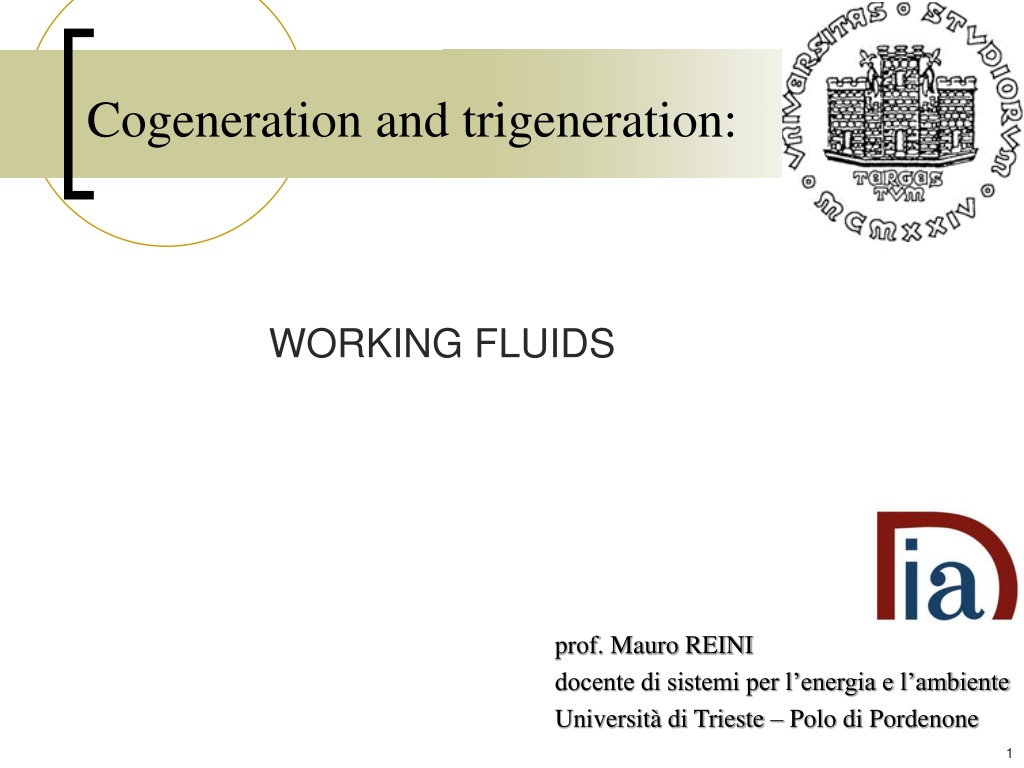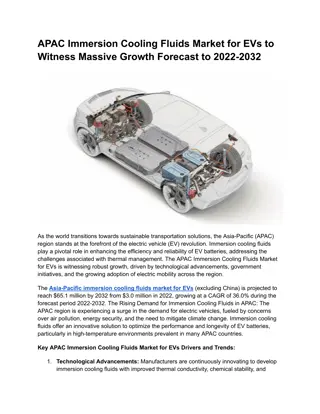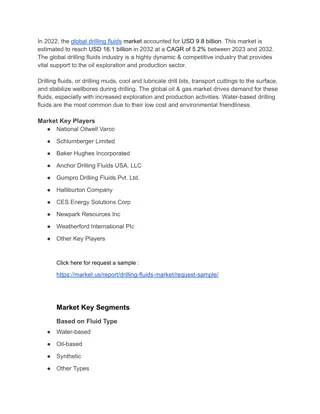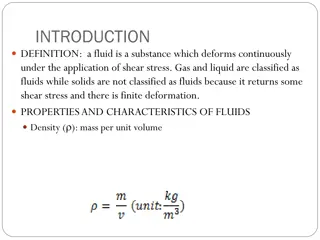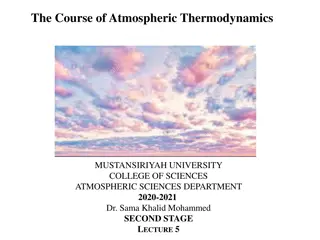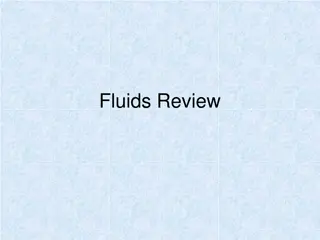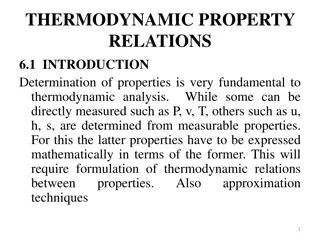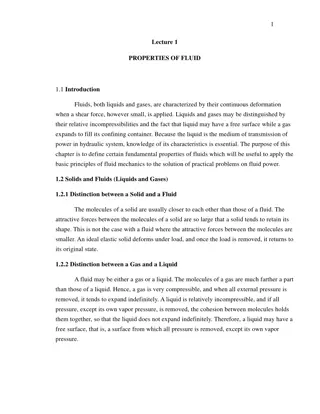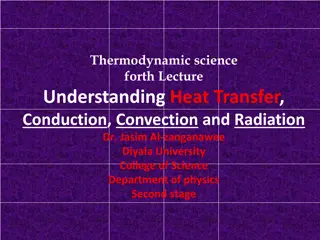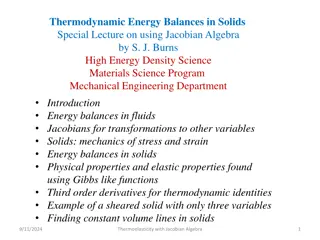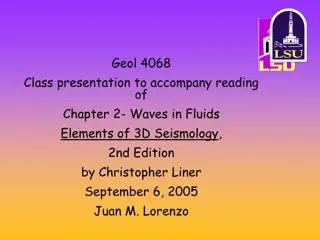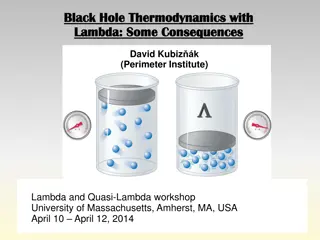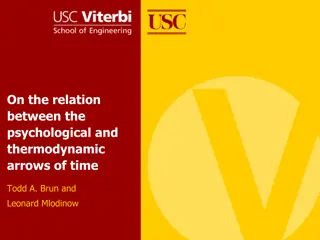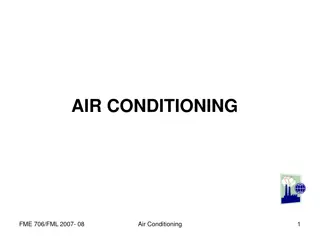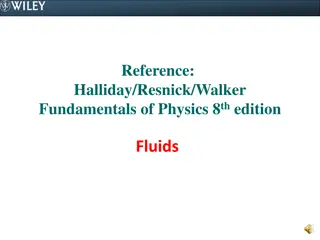Understanding Working Fluids in Thermodynamic Systems
Working fluids are essential in thermodynamic systems to transfer energy and perform work. This article explores the selection criteria, types, and work calculation involving working fluids in cogeneration and trigeneration systems. The properties, fluid types, and work processes are discussed to understand their role in system efficiency and environmental impact.
Download Presentation

Please find below an Image/Link to download the presentation.
The content on the website is provided AS IS for your information and personal use only. It may not be sold, licensed, or shared on other websites without obtaining consent from the author. Download presentation by click this link. If you encounter any issues during the download, it is possible that the publisher has removed the file from their server.
E N D
Presentation Transcript
Cogeneration and trigeneration: WORKING FLUIDS prof. Mauro REINI docente di sistemi per l energia e l ambiente Universit di Trieste Polo di Pordenone 1
WORKING FLUIDS A working fluid is a pressurized gas or liquid that actuates a machine or heat engine. Examples include steam in a steam engine, air in a hot air engine and hydraulic fluid in a hydraulic motor or hydraulic cylinder. More generally, in a thermodynamic system, the working fluid is a liquid or gas that absorbs or transmits energy. 2
Working fluid properties and selection criteria The working fluid plays a key role in the cycle. A working fluid must not only have the necessary thermo-physical properties that match the application but also possess adequate chemical stability in the desired temperature range. The fluid selection affects system efficiency, operating conditions, environmental impact and economic viability. Selection criteria are set out in this section to locate the potential working fluid candidates for different cycles at various conditions. 3
Types of working fluids Dry fluid Wet fluid Isentropic fluid 4
Work The working fluid can be used to output useful work if used in a turbine. Also, in thermodynamic cycles energy may be input to the working fluid by means of a compressor. The mathematical formulation for this may be quite simple if we consider a cylinder in which a working fluid resides. A piston is used to input useful work to the fluid. From mechanics, the work done from state 1 to state 2 of the process is given by Where ds is the incremental distance from one state to the next and F is the force applied. The negative sign is introduced since in this case a decrease in volume is being considered. The situation is shown in the figure which follows. 5
Work The force is given by the product of the pressure in the cylinder and its cross sectional area such that 6
Work Where A ds = dV is the elemental change of cylinder volume. If from state 1 to 2 the volume increases then the working fluid actually does work on its surroundings and this is commonly denoted by a negative work. If the volume decreases the work is positive. By the definition given with the above integral the work done is represented by the area under a pressure - volume diagram. If we consider the case where we have a constant pressure process then the work is simply given by 7
Critical points of the working fluids Condensation is a necessary process in the organic Rankine cycle and supercritical Rankine cycle. The design condensation temperature is normally above 300 K in order to reject heat to the ambient; therefore, fluids like methane with critical temperatures far below 300 K are out of consideration because of the difficulty in condensing. On the other hand, the critical point of a fluid considered as the working fluid of a supercritical Rankine cycle should not be too high to overpass. The critical point of a working fluid, being the peak point of the fluid saturation line in a T s diagram, suggests the proper operating temperature range for the working fluid of liquid and vapor forms, and the critical temperature is an important data for fluid selection. 8
Ideal gas An ideal gas is a set of atoms or molecules that move freely without interactions. The pressure exerted by the gas is due to the collisions of the molecules with the walls of the container. The ideal gas behavior is at low pressures, that is, at the zero density limit. Ideal gas follows ideal gas equation. 9
Ideal gas 10
Ideal gas 11 Energia per il domani: fonti rinnovabili, idrogeno e risparmio energetico - Sesto Val Pusteria; 28 giugno 2 luglio 2010
Real fluids and incompressible fluids Incompressible fluid: are the fluids with constant density. They could be liquids and gases. Incompressible means that the effects of pressure on the fluid density are zero or negligible. So the density and the specific volume of the fluid do not change during the flow. In most cases, water and many liquids can be considered incompressible but in specific cases like Water hammer. An ideal fluid is a fluid which will keep deforming on application of even a small amount of force. But practically there is always an opposition to flow in form of shear caused by adjacent layers of the flowing fluid as one moves over the other. Thus this property is viscosity and any fluid which posseses viscosity is real fluid. 12
Environmental aspects As to the environmental aspects, the main concerns include the ozone depletion potential (ODP), global warming potential (GWP) and the atmospheric lifetime (ALT). The ODP and GWP represent substance's potential to contribute to ozone degradation and globe warming. Alternative fluids are being found and applied. The alternatives are expected to retain the attractive properties and avoid their adverse environmental impact. The most promising candidates are still found among fluids containing fluorine and carbon atoms. The inclusion of one or more hydrogen atoms in the molecule, results in it being largely destroyed in the lower atmosphere by naturally occurring hydroxyl radical, ensuring that little of the fluid survives to enter the stratosphere 13
Availability and cost The availability and cost of the working fluids are among the considerations when selecting working fluids. Traditional refrigerants used in organic Rankine cycles are expensive. This cost could be reduced by a more massive production of those refrigerants, or by the use of low costhy drocarbons. 14
